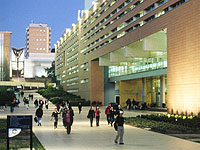|
||||||||||||||||||||||||||||||||||||||||||||
| Modern Art and French Imperialism - SAHT2223 | ||||||||||||||||||||||||||||||||||||||||||||

Description When Paris was invaded by Nazi troops, the art writer Harold Rosenberg reminisced how it had once been "the Holy Place of our time. The only one.". Until then, a Modern Art market had flourished in Paris, unsurpassed in scale and complexity by any other nation. It was actively supported by the French Third Republic. Whilst encouraging artists worldwide to come to Paris, it also encouraged international collectors to acquire Modern Art made in France. At the same time, the Republic also bought artwork for transmission to French provinces and colonies in its ethnocentric conviction that those at the 'peripheries' would become "civilized" by this "mission". This course will explore how Paris evolved as a unique field of cultural production through the network of institutional interrelationships forged between the French State, Paris Salons, art dealers and patrons. It will examine the huge number and national diversity of artists from Rupert Bunny and Marie Vassiliev to Pablo Picasso, who flocked from cities as geographically diverse as Sydney, St. Petersburg and Barcelona to this Modern Art Centre. By charting the dissemination of acquisitions, it will reveal how cultural imperialist strategies deployed by America during the Cold War, were alive and well in twentieth-century France.
|
||||||||||||||||||||||||||||||||||||||||||||


